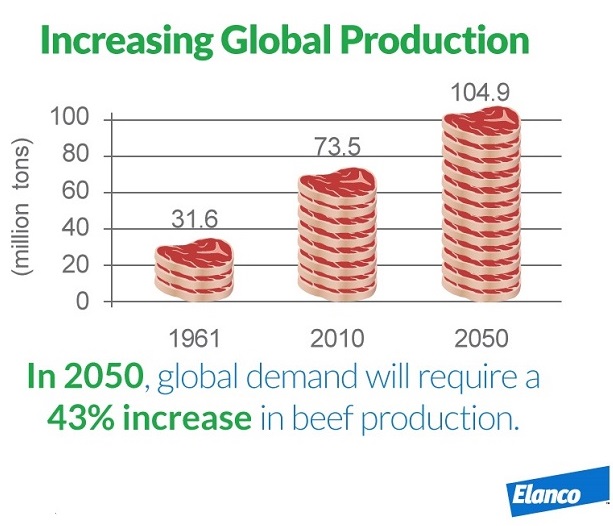Feeding a growing world population is among of the top concerns at the Cattle Industry Convention in San Antonio. The annual gathering has cattlemen thinking about how the beef industry will be feeding more people with less resources in the decades to come.

Elanco has launched their "Enough Movement" - the idea of producing enough beef to help feed the world population of 9 billion by the year 2050. He said it as equally as important to realize that three billion people from second and third world countries will be moving into the middle class in the future. As a result Elanco is expecting a 60 percent increase in demand for meat, milk and eggs. In the beef production analysis, an extra 43 percent more beef will need to be produced to take care of the world demand for beef.
Meeting this goal will require greater efficiency through innovation, allowing cattlemen to produce more beef with fewer resources. In talking about efficiency in the U.S., Vogel said it takes about two years to get an animal to harvest and it takes about 13 pounds of feed to make a pound a beef. In evaluating a less intensive system, such as those used in second and third world countries or in areas that use a more grazing approach, it takes about five years to get that animal to the same end point and it takes about 26 pounds of feed to produce that same pound of beef. In looking at the future, he said it will all come down to becoming more efficient.
"As we look at the world population and the number of cattle that we are going to have to have, we are going to need an extra 710 million cattle produced around the world to meet the need for beef in the year 2050," Vogel said.
This can be accomplished a couple of different ways. First, by adding more cattle. Vogel said that is probably not the sustainable approach, because we are already using 1.5 times the Earth's regeneration cycle per year. He said the second way is to look at technology to improve animal productivity. The idea of technology is quite broad, as this could include artificial insemination, improving genetics, improving nutrition, and treating parasites.
"If we do those simple things, we believe we actually have enough (cattle) population that we can produce the extra beef that we are going to need in the year 2050, simply by taking advantage of the existing technologies that we have today," Vogel said.